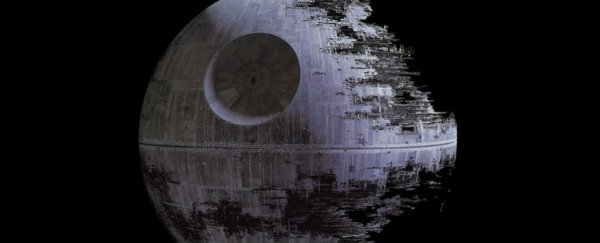Keen Star Wars fans have to do something to while away the time between now and the opening of Episode VII: The Force Awakens - and in the case of Washington University financial engineer, Zachary Feinstein, that something is working out the full financial ramifications of the destruction of the Death Star space stations in earlier movies.
And it's not pretty. By Feinstein's maths, the first Death Star would have cost around $193 quintillion in US dollars (1 quintillion is 1 million times a trillion, with no less than 18 zeroes after it), and that includes research and development. The second Death Star - which was actually finished, of course - comes in at around $419 quintillion. Space stations like this would need an awful lot of backers, and their destruction would apparently be enough to bring the galactic economy to its knees.
Feinstein thinks that's one reason why the Empire (or First Order) will still be alive and well in the upcoming movies: the Rebel Alliance won't have had the financial reserves to repair the economy after the second Death Star's destruction. "Without such funds at the ready," writes Feinstein, "it's likely the galactic economy would enter an economic depression of astronomical proportions."
Feinstein sets out his thinking in full in his paper called, "It's a Trap: Emperor Palpatine's Poison Pill". He uses calculations based on the size of our modern day aircraft carriers to try and work out just how much steel and other materials would be required to put together something like the Death Star - a space station capable of blowing up a planet in a single laser blast, don't forget.
"Economics and finance, much like the Force as explained by Jedi Master Obi-Wan Kenobi, is 'created by all living things. It surrounds us and penetrates us; it binds the galaxy together'," writes Feinstein, blaming the Rebels' lack of long-term thinking for not realising the economic repercussions of their most famous successes.
The paper uses a detailed analysis of financial models to work out exactly how much the galactic economy was reliant on the activities of the Empire and how many investors it was in debt to.
In conclusion, Feinstein reckons the Rebel Alliance would have needed a bail-out fund of around 20 percent of GGP (Gross Galactic Product) in order to avoid a severe economic depression. Unfortunately, maths was never Luke Skywalker's strong point.
By all means, enjoy The Force Awakens this Christmas: but you might want to think about the financial ramifications of the Rebels' actions in between the major scenes…
